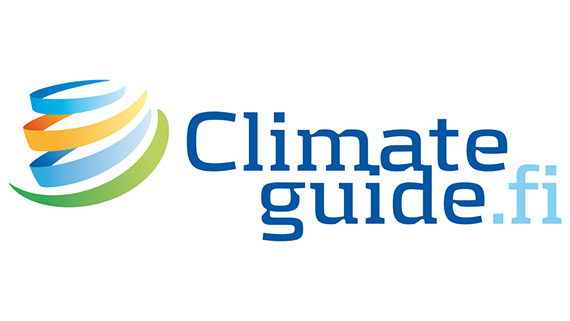Interactive visualization shows the increase in methane and carbon dioxide concentrations at the measurement station in Pallas

Carbon dioxide and methane are both powerful greenhouse gases, and their concentration in the atmosphere affects the progression of climate change. "The concentration of greenhouse gases in the atmosphere also tells us about the Earth's condition on a wider scale, which is why it's so important that we monitor them," notes Head of Group Tuula Aalto from the Finnish Meteorological Institute. The background measurements also help monitor emissions, as observing the atmosphere is the only way of confirming governmental reports on emission reductions.
Visualisations displays a rising trend
The change in the amount of carbon dioxide and methane in Pallas can be studied with the new interactive visualization on Climateguide.fi. The visualization displays the daily average values for carbon dioxide and methane as well as three different trends. One of the trends shows seasonal changes and the two others the long-term trend that, for both gases, is on an upward trend.
The visualizations shows the concentrations of carbon dioxide since 1998 and the concentrations of methane since 2004 until 2015, and these concentrations can also be compared for shorter periods as well. The visualization provides an overall picture on the development of the concentrations and makes the research more understandable for a large audience.
Seasonal changes are characteristic for Pallas
Seasonal changes are typical for the measured concentrations of greenhouse gases at Pallas, where the seasonal change in the concentration of carbon dioxide is clearly more regular than for the concentration of methane. The concentration of carbon dioxide is at its highest during the winter and decreases as the season changes towards growth and the vegetation begins absorbing the carbon dioxide in the air. While the concentration of methane also increases during the winter, it also rises momentarily at the end of summer, when the swamps around Pallas release methane into the air.
Even though the concentrations vary according to the seasons, both carbon dioxide and methane are on an upward trend. The concentration of carbon dioxide has risen continuously at the measurement station in Sammaltunturi since the measurements began. "Even the concentration of methane began growing again in 2007 after a ten-year stable period," says Head of Group Tuomas Laurila.
In Pallas, the concentration of carbon dioxide has risen by 2.0 ppm per year and the symbolic threshold of 400 ppm was already surpassed in 2012. This means that there is now more carbon dioxide in the atmosphere than ever during the industrial age.
Observations at Sammaltunturi part of international measurements
The visualization is based on the measurements that are being made at the Finnish Meteorological Institute measurement station located at the summit of Sammaltunturi in the Pallas-Yllästunturi National Park. "The location is ideally far from any large emission sources such as cities, so the measurements provide a representative picture of the concentrations of greenhouse gases in the atmosphere," says Tuula Aalto.
The Sammaltunturi measurements are part of the international GAW measurement network that monitors the atmospheric concentrations of greenhouse gases worldwide. The measurements made by the GAW station network and at Sammaltunturi also help study emission sources and sinks.
Further informationClimateguide.fi: Greenhouse gases at Pallas visualization
Head of Group Tuula Aalto, tel. +358 50 5550006Head of Group Tuomas Laurila, tel. +358 50 3671305
